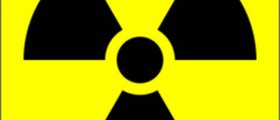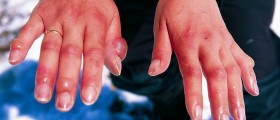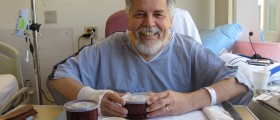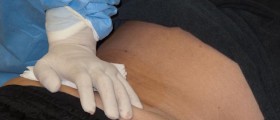
Radiation sickness results from the excessive exposure to the sources of radiation, which may be accidental and intentional (for example, in medical treatments).
There are two types of radiation: non-ionizing (light, radio waves, microwaves, radar) and ionizing (X rays, gamma rays, particle bombardment). While non-ionizing radiation usually does not cause tissue damage, ionizing radiation is most likely to cause chemical changes on the human tissue.
Radiation exposure can be chronic, when it occurs in many smaller exposures over time, or acute, which implies single strong exposure. Radiation sickness is usually related to acute exposure, while chronic exposure may lead to medical conditions such as cancer.
Symptoms of acute radiation sickness depend on the duration of exposure, the area that is affected, as well as on the type and amount of radiation. The symptoms may occur immediately upon exposure or they can take days, weeks and months. The consequences of exposure to radiation range from sickness to death.
It is not easy to determine the amount of exposure, for example in the nuclear accidents, so the best way to estimate the severity and the prognosis is to consider the time that passes between exposure and the onset of the symptoms, as well as their severity. For example, if a person starts vomiting within one hour after the exposure, it indicates the amount of radiation was very high and it will almost certainly lead to death.
Some of the symptoms of radiation sickness include bleeding from the nose, mouth, gums and rectum, hair fall, bruising, dehydration, diarrhea, fatigue, nausea and vomiting, skin inflammation, burns and ulcers, blood in vomit and stool.
These symptoms are usually treated individually, for example, medications can be administered to alleviate nausea, vomiting and diarrhea, antibiotics to prevent infection and blood transfusions for anemia.
The first aid for the person exposed to severe radiation must be performed only with protective gear on, otherwise there is a risk of contamination.
The first thing to do is to check the vital signs and perform CPR if necessary. Clothes must be removed from the victim immediately and disposed in a sealed container as they may contain contaminants. Skin should be washed thoroughly and vigorously with soap and water.
The area where the exposure occurred should be abandoned immediately and emergency officials should be informed. If there are burns or sores on the skin, they should not be treated with any ointments during first aid intervention.
Radiation exposure during X-ray exams or medical treatments involving radiation should be done with protective gear covering other parts of the body. Persons who work in hazardous areas should continually measure the exposure.

















Your thoughts on this
Loading...